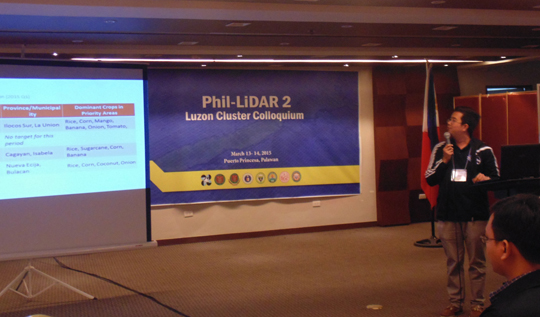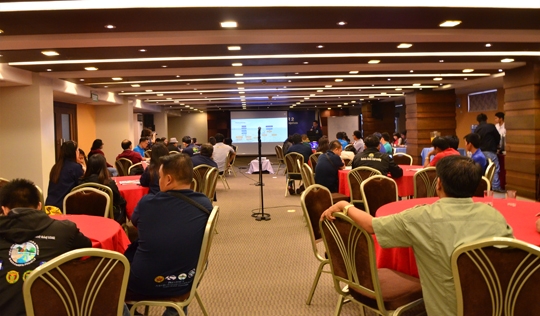

Embarking on a quest to map out the natural resources of the country, the Phil-LiDAR 2 program, an attachment of the Disaster Risk and Exposure Assessment for Mitigation (DREAM) program, was launched by the Department of Science and Technology (DOST). The program involves identifying resources for agriculture, coastal, forest and rivers, and potential areas for renewable energy production through the use of Light Detection and Ranging System (LiDAR). Thus, with the complexity associated in developing a nationwide resource mapping system, the participating higher education institutions (HEIs) in Luzon under the program were convened in the first Phil-LiDAR 2 Luzon Cluster Colloquium to harmonize and share best practices among its different project components.
The two-day event was held in Fersal Hotel, Puerto Princesa City, Palawan and was hosted by the University of the Philippines Los Baños' (UPLB) Phil-LiDAR 2 team. It was attended by different project leaders and their research personnel from the participating HEIs from Luzon.
In her welcome remarks, Dr. Damasa M. Macandog, project leader of UPLB Phil-LiDAR 2, encouraged each group to continue building relationships by unifying the efforts among its different project components. This was also emphasized in the opening message of Dr. Ariel C. Blanco, program leader of Phil-LiDAR 2, where he stated that, "If our team is united and actively sharing what we have found useful, I think we can handle any problem that will come our way".
Project presenters from seven HEIs in Luzon under the Phil-LiDAR 2 program delivered updates from their projects and shared practices as reference. The HEIs are as follows: University of the Philippines-Diliman, Mariano Marcos State University, University of the Philippines Los Baños, Isabela State University, Central Luzon State University, Mapua Institute of Technology, and Ateneo de Naga University. Some of the practices they shared include the methods they used in acquiring data using mobile apps and computer software to make data gathering more efficient. Mentoring and clarification regarding the problems encountered by each attending HEI were also tackled in the open forum.
In closing, Engr. Nelson P. Beniabon, Division Chief of the Emerging Technology Development Division under PCIEERD, thanked the group for their incessant efforts and commitment to the program. He added that he is confident that the program will yield outputs that will strengthen the country's Research and Development initiatives towards a progressive nation.
With the successful conduct of the first Luzon Cluster Phil-LiDAR 2 colloquium, unified efforts of the participating HEIs toward a dynamic conduct of the projects in Luzon is further established. The next initiative to ensure a strong collective output for the program will be the conduct of the Visayas Cluster Phil-LiDAR 2 colloquium for the participating HEIs in the area. It will be held on March 30-31, 2015 in Cebu City to provide a venue for the sharing of their project updates and deliver mentoring support as well. Similarly, the colloquium for the Mindanao cluster will be on April 15-17, 2015 at Central Mindanao University, Bukidnon.
The Phil-LiDAR 2 program is monitored by PCIEERD and is funded by DOST (Edgilyn R. Alcasid and Hector C. Brizuela).




